Hello, hivers and garden lovers!
So, I finally picked enough ripe tomatoes to make it worth processing and canning them. I've been picking a few ripe paste tomatoes each day for about a week or so, but I use those for making sauce. Most of the canning tomatoes that I picked were Black Krim tomatoes, but a few were Amana Orange, which actually ripen to more of a yellow color. I still don't have any tomatoes starting to ripen on the Better Boy plants, they're a bit behind. The Black Krim and the Amana Orange tomatoes are both larger type heirloom tomatoes, so it doesn't take a lot of them to fill 8 pint jars.
For canning tomatoes in pieces, the first thing I had to do was to wash and then peel them. The easy way to peel a tomato is to put it into almost boiling water for just long enough to split the skin, and then take the tomato out of the hot water and put it into cool water to stop it from cooking any further.
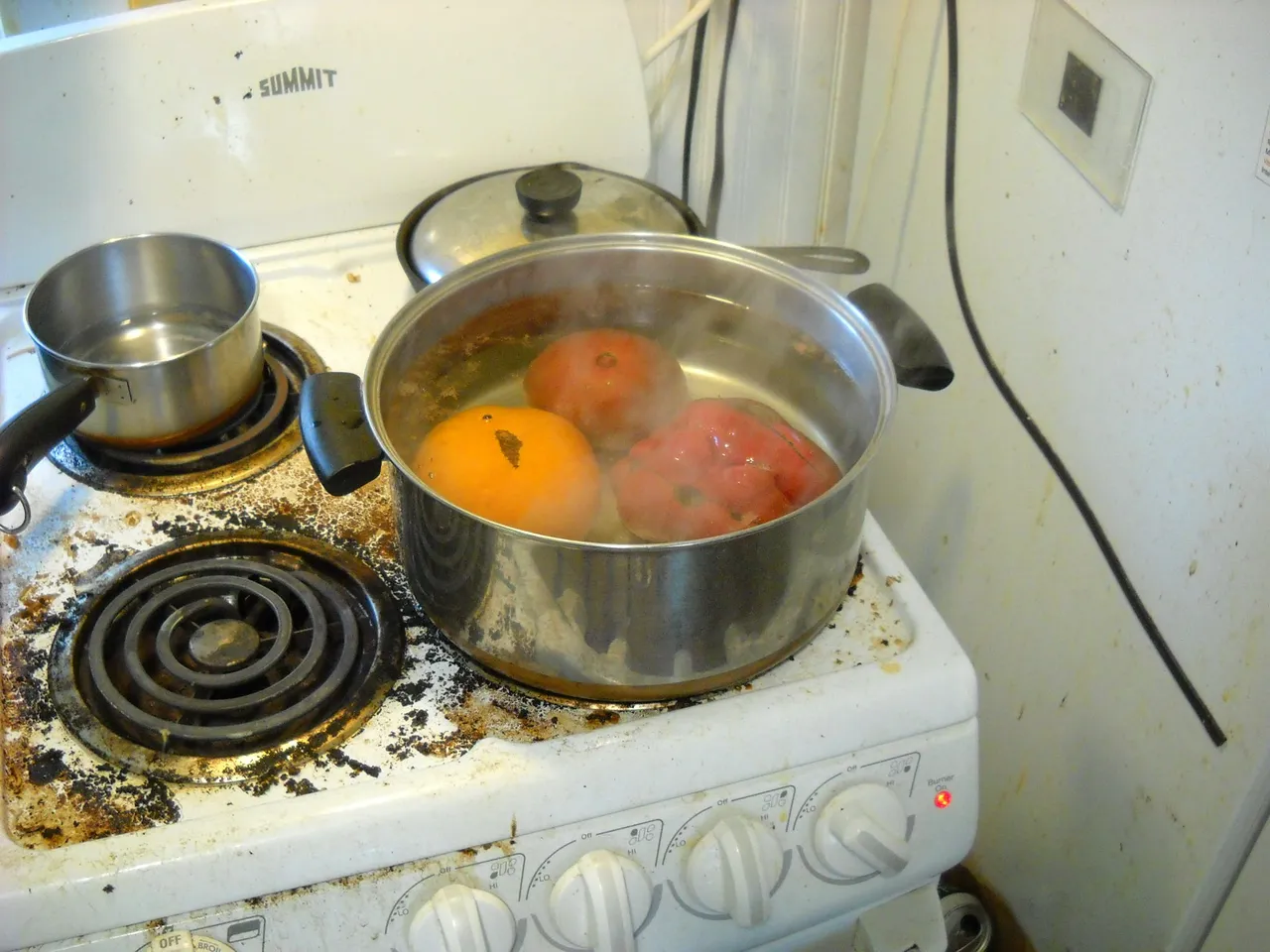
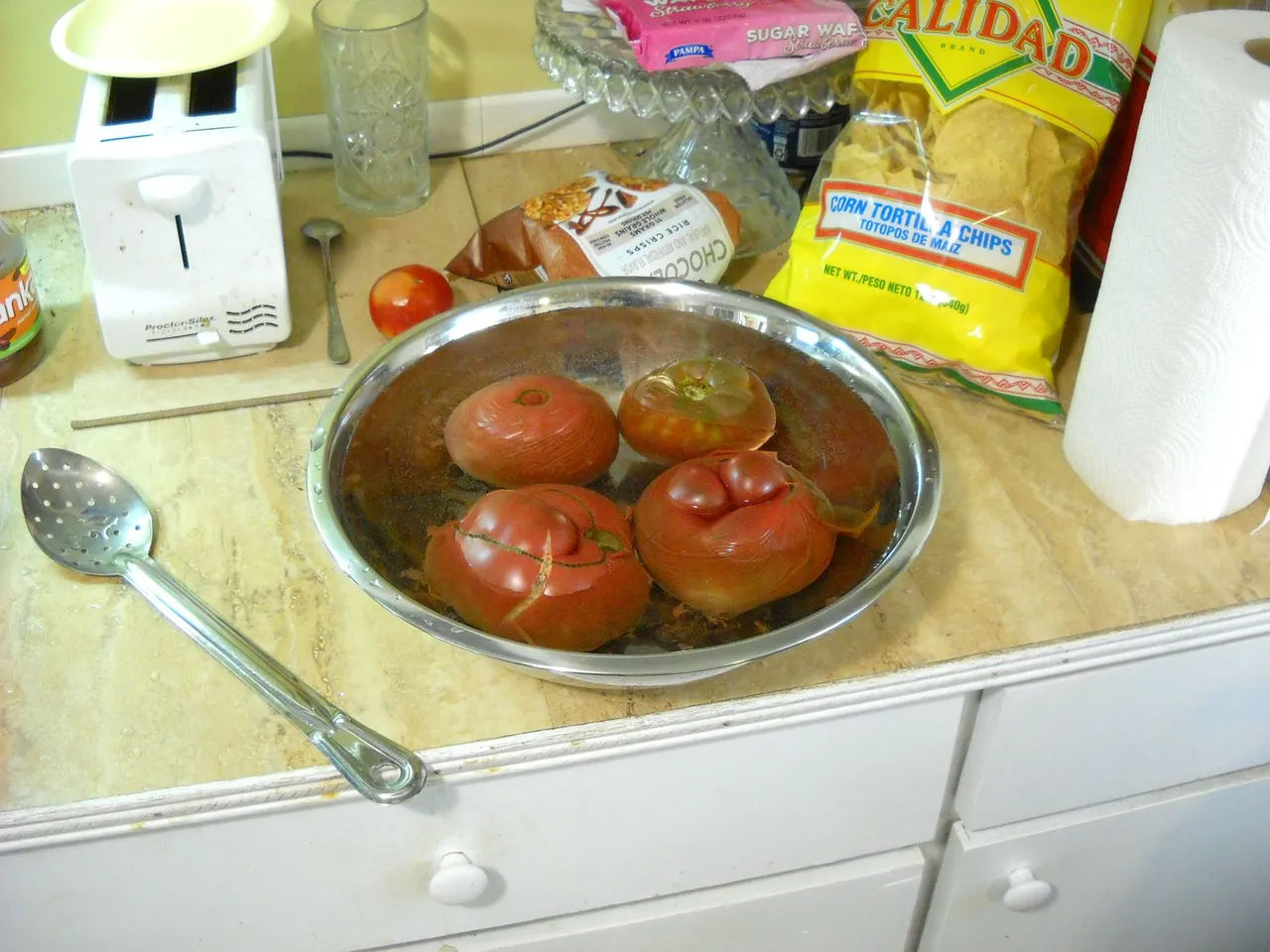
It only takes a minute or 2 in the cool water to cool them down enough, and them I put them in another bowl to make room for the next tomatoes in the cool water. You can see how the skins split and loosen up on the tomatoes. That makes them much easier to peel.
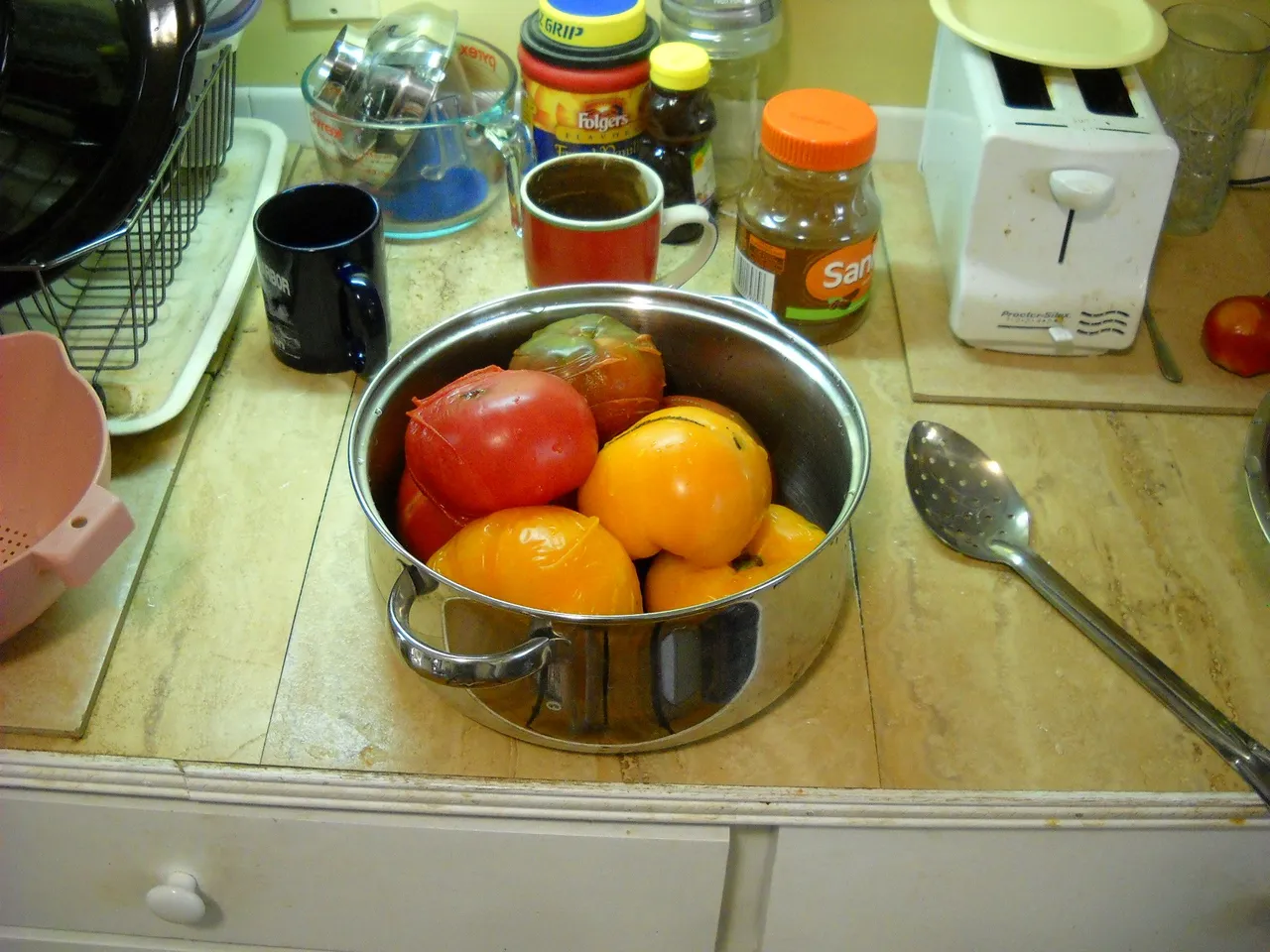
From this point, the process gets a bit messy. I peel each tomato, cut out the stem and the bottom, sometimes multiple bottoms, and then cut the tomato into pieces into a big pot.

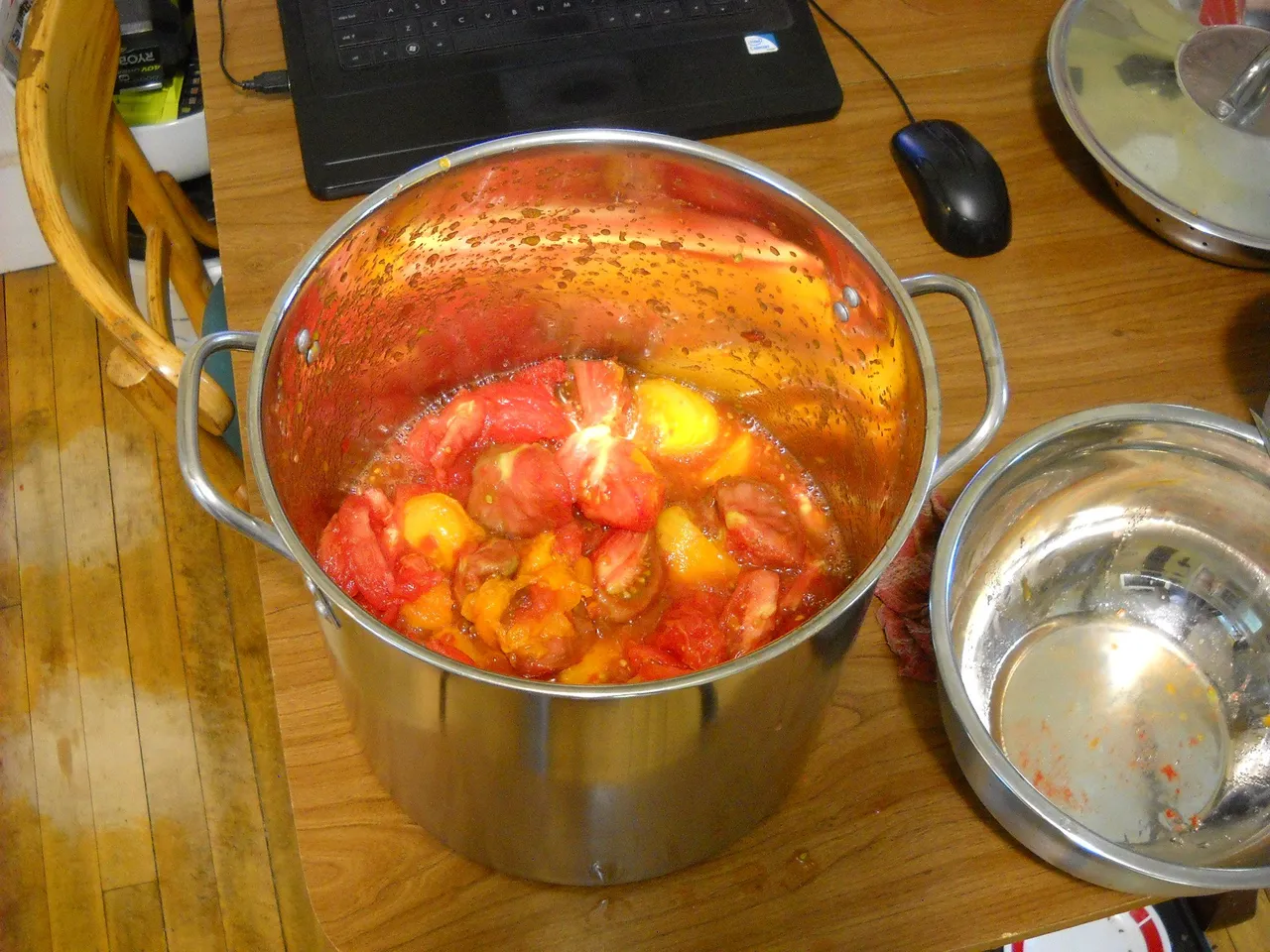
At this point, the tomatoes are ready to be put into the jars. I mostly use these tomatoes for cooking in the crockpot, so I can them in pint jars. I use the standard mouth jars for my tomatoes. I use a canning funnel to fill the jars, it's less messy. I'm putting the jar into the bowl when I fill it to hopefully catch any spillage while filling the jar. I do what's known as the cold pack method. I don't heat up the tomatoes before I put them in the jars. I use the blue "stick" to get the trapped aie bubbles out of the jar as I'm filling it.
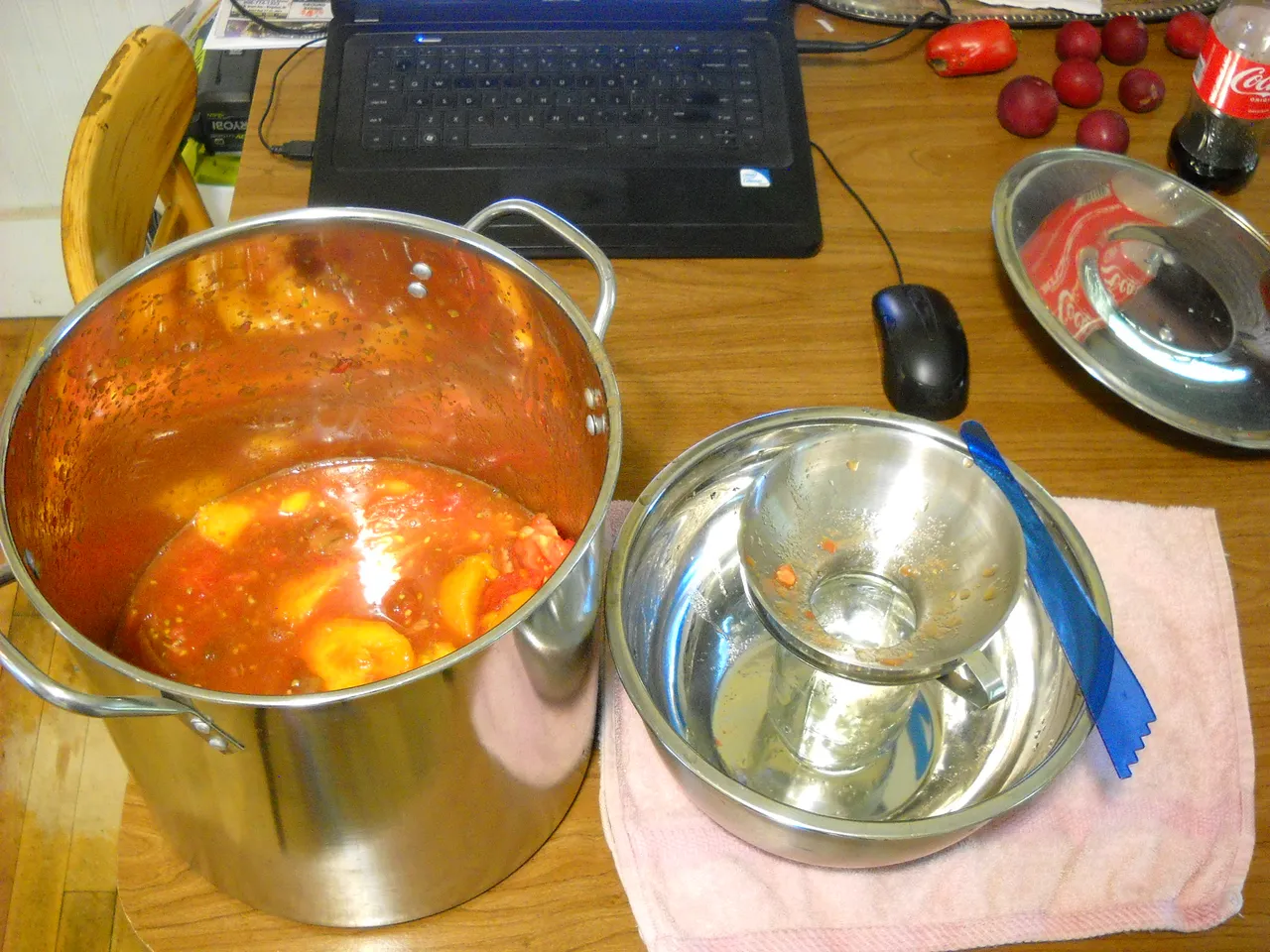
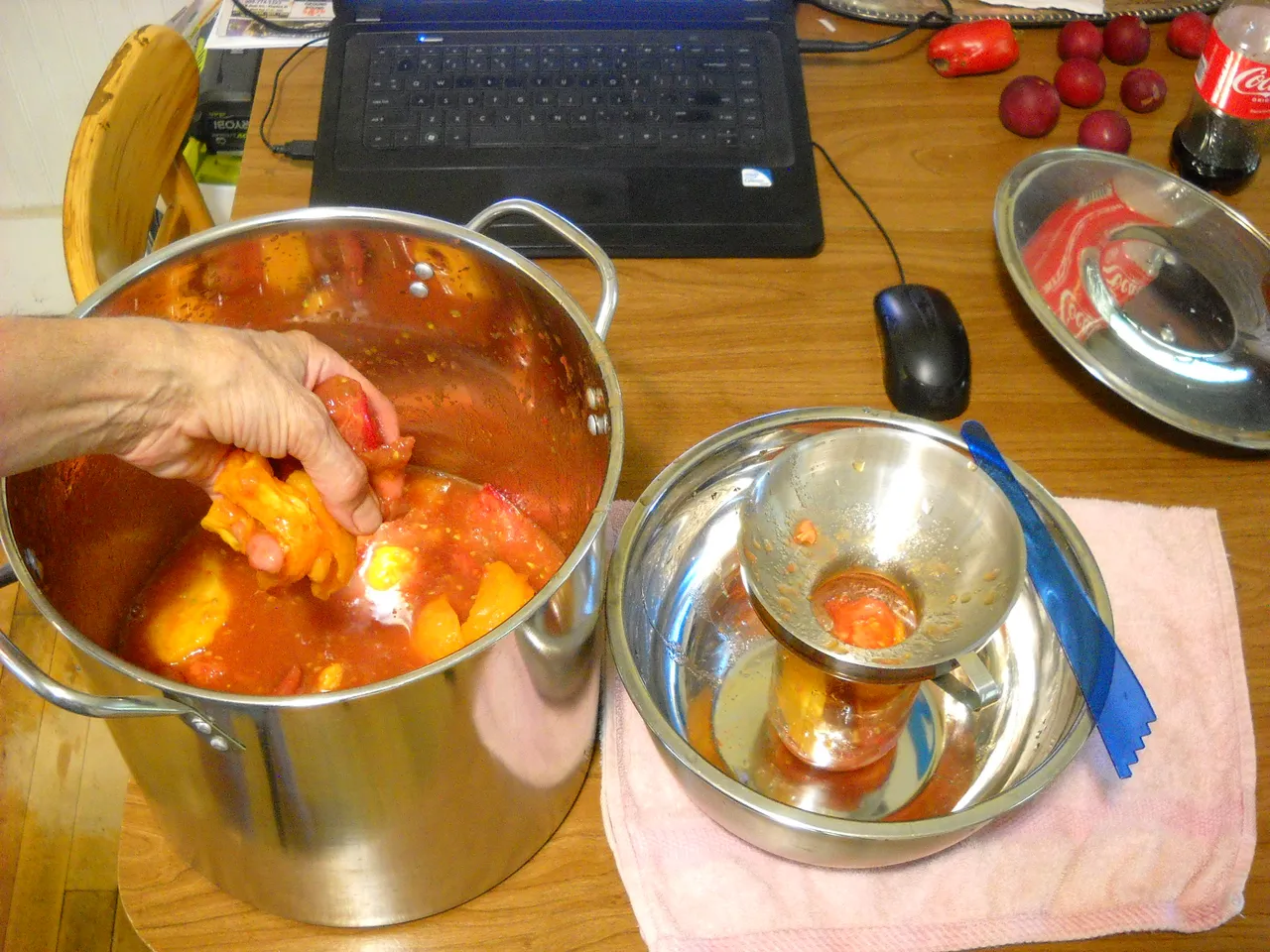
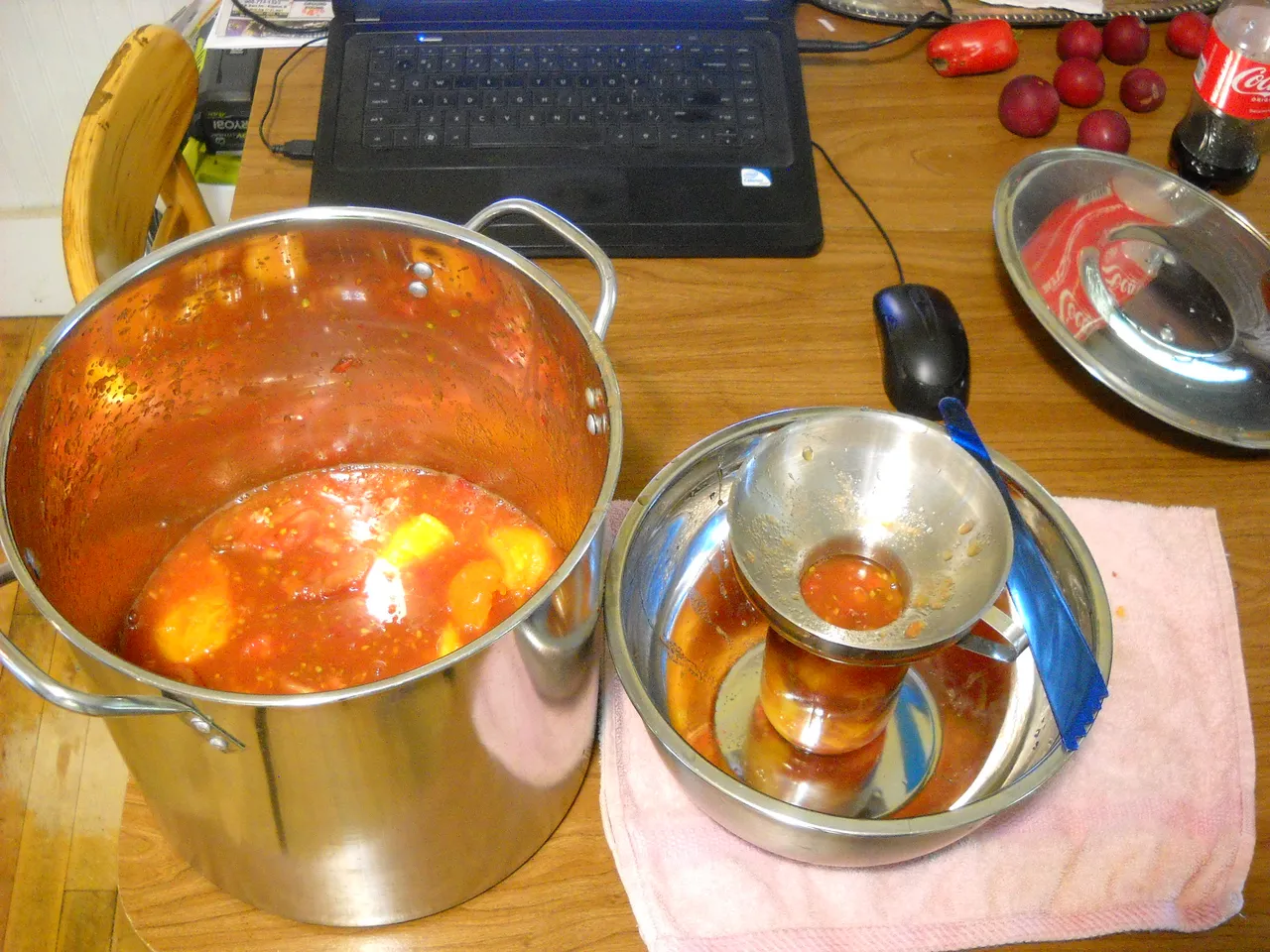
After I fill each jar, I put it in my big heating pot that has hot water in it. After I get all the jars filled up, I let the contents heat up for a bit before preparing them for the canner. I add 1/4 teaspoon of canning quality citric acid powder and 1/2 teaspoon of canning salt to each pint jar. The citric acid raises the acidity to make it safer for water bath canning. It takes the place of the lemon juice concentrate that used to be recommended for that purpose. While the filled jars are heating up, I'm also heating the lids in almost boiling water to soften up the sealing compound around the rim of the lid. This helps to get a good seal on the rim of the jar.
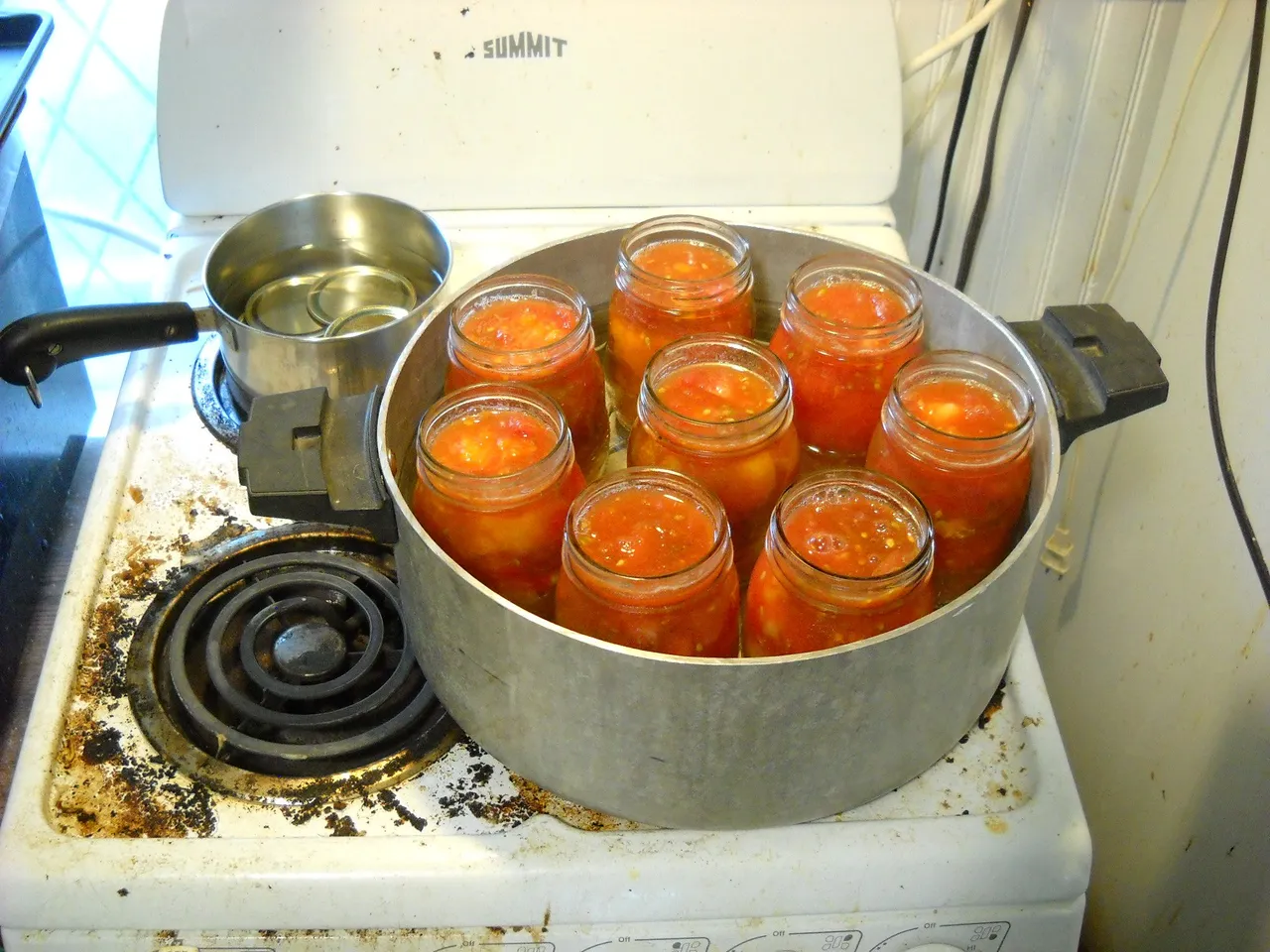
I decided that I wanted to try pressure canning the tomatoes this year. Water bath canning takes a fairly long time, 50 minutes in boiling water for pint jars. My canning books don't discuss pressure canning of tomatoes, so I had to look it up on line. For pint jars of tomatoes, it takes 10 minutes at 10 pounds pressure. That means a lot less time involved with watching the canner. Of course, if you don't have a pressure canner, tomatoes are one of the high acid foods that you can safely process in a boiling water canner, or big deep pot. The pot has to be deep enough that the jars are covered by an inch of water for boiling to ensure that they get heated thoroughly for proper processing.
Here's the results of my first batch of pints of tomatoes.
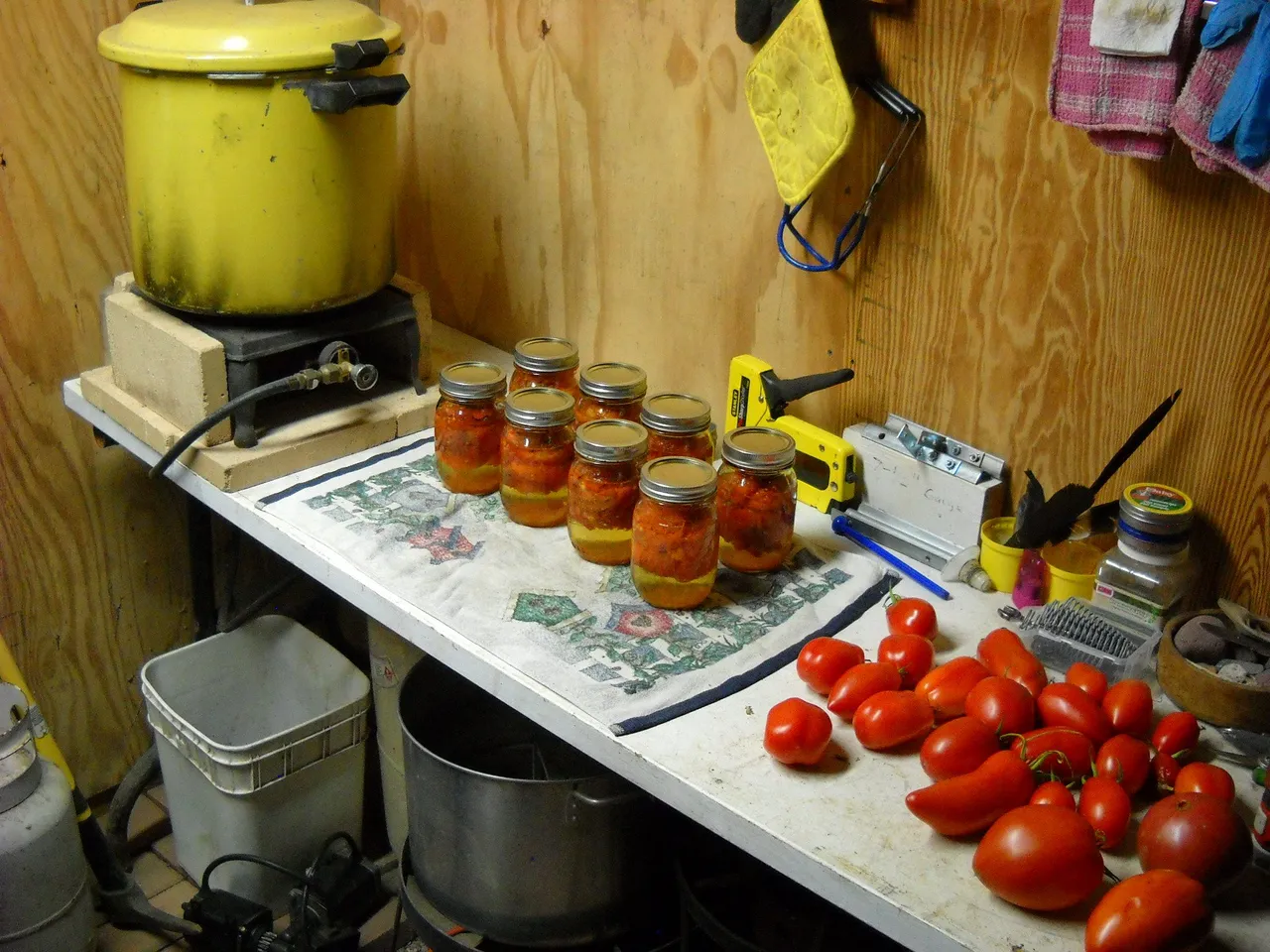
All of those paste tomatoes are just about ripe enough for processing into sauce, but that's a subject for a different post.
That's all I have for this post, thanks for stopping by to check it out!


